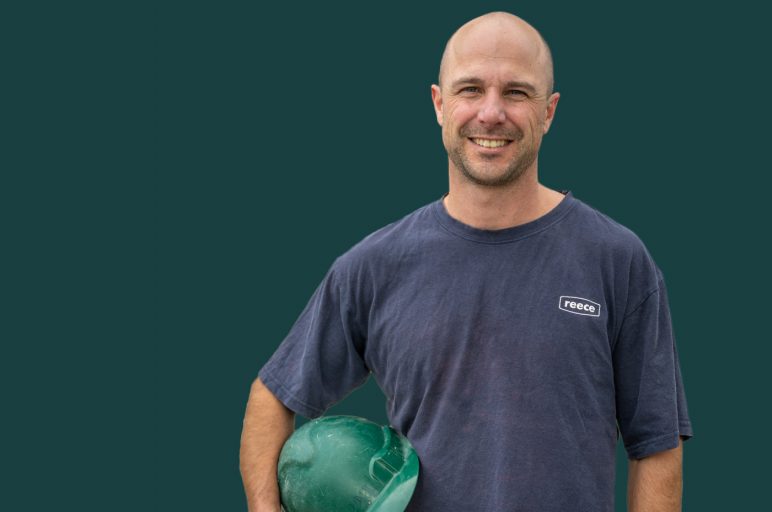When you start your investing journey, you’ll have to ask yourself a small, but significant, question – what kind of investor do you want to be?
Do you want to be hands-on by actively managing your portfolio, picking your own stocks and checking balances regularly?
If this sounds like you and think you can outperform the share market by picking your own stocks (or if you pay someone else to pick them for you), then you can consider yourself an active investor.
Or would you prefer to do as little work as possible and let someone else worry about what shares to buy and when to sell?
If you don’t have the time or appetite for company research and market analysis, then you should consider a passive investing strategy.
What is passive investing?
Passive investing is a long-term investing strategy where the investor buys and holds stocks. Passive investors tend to ignore short-term market volatility and instead focus on long-term gains.
The passive investing strategy maximises your returns by minimising the costs of administration (including management fees and performance fees), trading (such as brokerage fees) and taxation (like capital gains tax).
Though it’s the easy path, passive investing is not a short route to riches. Passive investing might take you some years, or even decades, of topping up and holding on to your investments before you reach financial goals.
What are the benefits of passive investing?
Instead of using complex stock-picking strategies, obscure investing products, and much-hyped investor mojo (or ‘skill’), passive investing provides ordinary people with a simple, transparent and affordable way of building long-term wealth.
When you invest in a passive portfolio of assets you know exactly what companies you hold. Whether it’s the ASX 200, the S&P 500 or the MSCI World Index, you can easily lift the hood of your fund to see what companies, sectors, and geographies you are exposed to.
And when tax-time comes around, you’ll be winning. Simply by holding on to your passive investments and letting them appreciate in value over time, you’ll be minimising the amount of capital gains tax you owe to the government.
Even if an active investor can outdo the market, they’ll have to pay the tax man for every single sale they made to get there. That tax bill might be big enough to wipe out any outperformance.
But one of the benefits of passive investing is that it is very cheap. Instead of paying upwards of 1.5% to a fund manager, ETFs that track the wider market can cost you as little as 0.1% in annual fees. And what’s more, when it comes to investing, buying cheap does not mean you won’t reap the rewards. Despite their big pay packets, active fund managers are likely to underperform the market. This is based on research from the S&P which looked at the performance of active fund managers. S&P analysed their performance over 15 years and compared it to passive index investing.
What is the best way to invest passively?
Passive investing is done best when it’s true to its name. The best way to save time and money while investing is by buying into a basket of companies that mirrors the broader performance of the stock market. These are known as index funds. You can easily buy them on the ASX through a financial product known as an exchange traded fund (ETF).
In recent years, ETF passive investing has boomed in Australia. As people start learning about the benefits of passive investing in Australia, they are moving their money to passive ETFs. Since ETFs came to the scene in the 1990s, Australians have invested more than AUD$125 billion into these financial products funds. Today there are more than 250 ETFs listed on the ASX. By far, ETFs are the best way to invest passively in Australia.
Other popular ways of passive investing in Australia are not so passive at all. You might think that rental yield from an investment property is an easy passive income, but when you factor in the property’s upkeep, the task of finding tenants, you might find that your ‘passive’ rental property feels more like running your own business.
Sure, you can pay someone to manage your investment property for you. Be aware that you might have to forfeit up to 4% of your annual rental yield.
Tips for passive investors
For many investors, the goal is to generate regular sources of passive income to reach their financial goals. This is a fine goal. However, you should be wary of the dangers of depending on high-risk assets like shares to provide your income.
Diversify your portfolio
We recommend that you diversify your passive income investments across different asset classes, such as Australian shares, government bonds, gold and even different countries. Not only will this help protect you against significant falls in asset values, but it will decrease the volatility of your portfolio income.
Look for dividends and capital growth
When you’re investing for passive income there are a couple of things to consider. We suggest that you take into account not only share dividends and bond distributions, but the capital growth of your whole portfolio. This is called a total return approach. It allows you to cash in on the gains in your portfolio’s capital value. It also allows you to reap a moderate dividend yield, and protect yourself from major losses through market downturns.
How to get started
So by now, you might have decided you want to be a passive investor – great! But you can’t put your feet up just yet. With more than 160 ETFs on the Australian Stock Exchange (ASX), the task of answering the simple question of ‘which ETFs should I invest in?’ can lead you down a rabbit hole of research.
Even once you’ve decided which ETFs to buy, you will still need to determine a few things. These include the allocation between them and your rebalancing strategy. You will have to set up dividend reinvestment and navigate your complex taxation requirements. That doesn’t sound very passive, does it?
If you want to avoid the headaches, take a look at Stockspot’s automated investing accounts. We can handle the whole process for you. Stockspot helps you determine your risk profile and we research the right ETFs to invest in. We handle portfolio allocations and rebalancing your investments. We’ve designed the entire process so you can enjoy the benefits of a truly passive investment strategy.
All you need to do is open an account, make a deposit (or regular deposits) and let your passive investing strategy work its magic.







